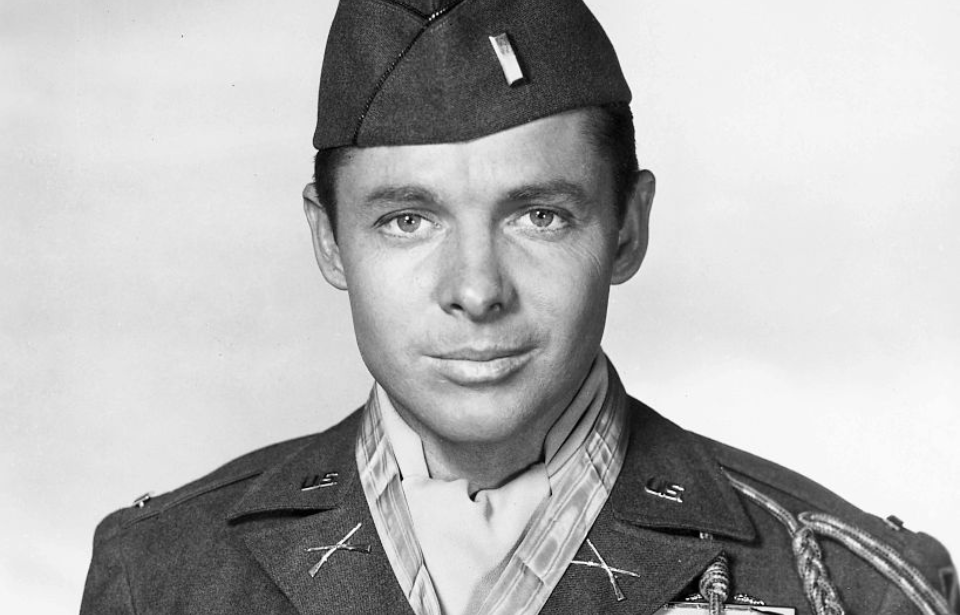Audie Murphy, a revered figure in both the US Army and the world of Hollywood, garnered recognition through his valorous service in the Second World War, ultimately achieving the status of the most decorated soldier in American history. After his military tenure, he transitioned into a successful career in the film industry, taking on prominent roles in a string of acclaimed movies, one of which dramatized his own heroic deeds.
Here, we present nine intriguing and less-discussed facts about this extraordinary actor and war hero.
He was rejected from the US Navy and Marine Corps
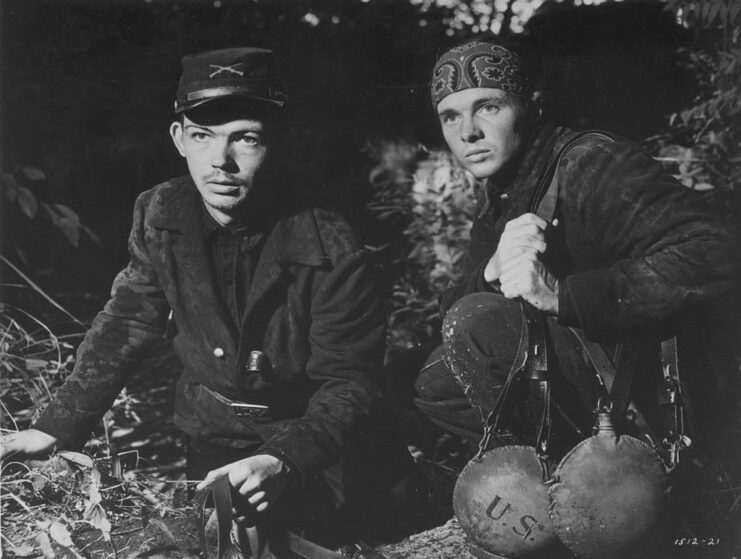
Following the Japanese attack on Pearl Harbor, Audie Murphy felt compelled to join the US military. Despite his determination, his initial attempts to enlist with the Marine Corps, Navy and Army were rejected, due to his age and being underweight.
Undaunted, Murphy enlisted his sister’s assistance in altering his documents to make himself appear older than he actually was. Armed with this subterfuge, he once more sought to join the US Army and, this time, he succeeded.
Murphy commenced his military journey at Camp Wolters, Texas, where he underwent Basic Training, earning distinctions such as the Expert Badge with Bayonet Component Bar and Marksman Badge with Rifle Component Bar. Subsequently, he proceeded to Advanced Infantry Training at Fort Meade, Maryland.
Audie Murphy single-handedly held off a company of German troops
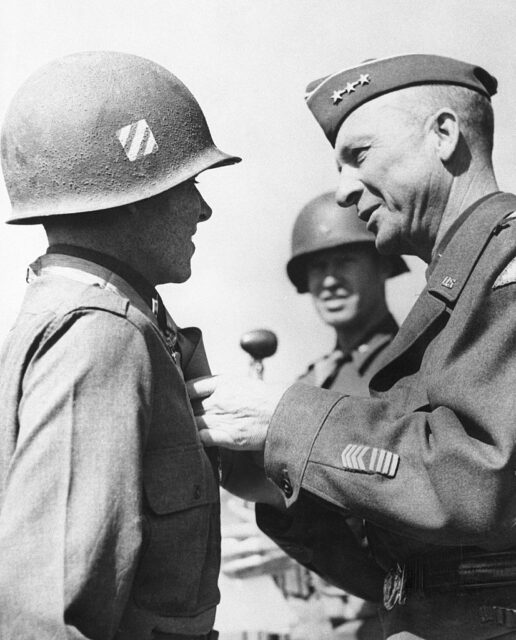
In February 1943, Audie Murphy was deployed to the Mediterranean, and after seeing notable action there was transferred to the European Theater. It was there that he would experience the majority of his wartime service. One notable incident, in particular, resulted in him being presented with the Medal of Honor.
In January 1945, Murphy was stationed in the Colmar Pocket with his platoon. He and the 3rd Infantry Division were later moved to Holtzwihr, where they encountered a German counterattack. Murphy was made commander of Company B, and, despite being injured, put the wellbeing of his men over his own.
After the Germans set an M10 tank destroyer ablaze, Murphy ordered his men to retreat to the woods, away from the enemy fire. Alone, with just his M1 Carbine and a radio to direct artillery fire, he mounted the armored vehicle and began firing its .50-caliber machine gun at the advancing troops. He did this for an hour, inflicting 50 casualties.
Murphy himself suffered yet another injury to one of his legs. Despite being wounded, he returned to his men and led a full-man charge against the Germans. Speaking about Murphy’s bravery, Pvt. Charles Owen recalled, “He saved our lives. If he hadn’t done what he did, the Germans would have annihilated us.”
The US Army changed how he viewed his name
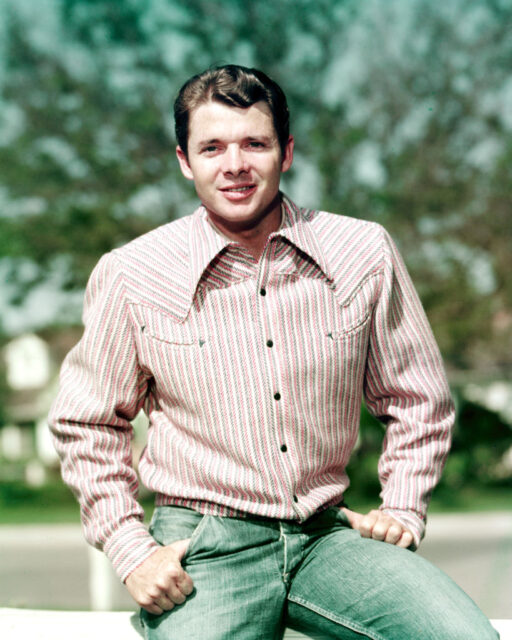
While he was growing up, Audie Murphy hated his first name. As such, he often went by his middle name, Leon. It had been given to him by one of his older sisters, who had no idea of its meaning in Latin: “lion.” It was a rather fitting name, considering all he achieved during World War II.
Only when he entered the US Army did Murphy begin to appreciate his first name. In the service, “Leon” was considered a country name, which prompted him to go by either “Audie” or “Murph” for the remainder of his life.
Awarded every US military combat award for valor – and then some
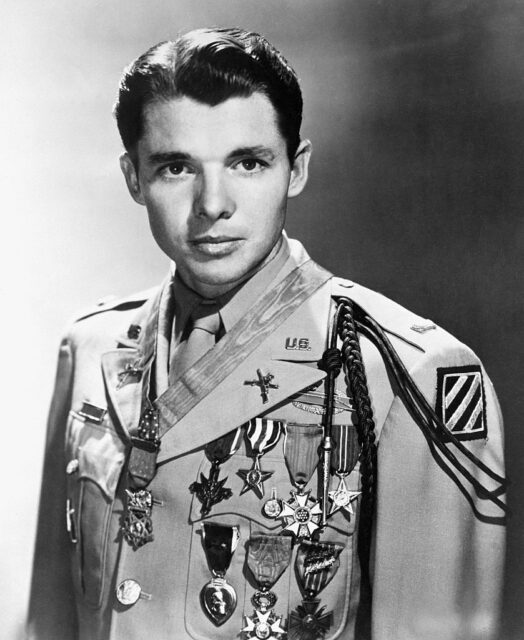
Audie Murphy is known for being the most decorated soldier in American history. This isn’t a symbolic title, either – he actually earned all the honors bestowed upon him.
Along with the Medal of Honor, Murphy was presented with the Distinguished Service Cross, the Silver Star with bronze oak leaf cluster, the Legion of Merit, the Bronze Star with “V” Device, the Purple Heart with two bronze oak leaf clusters, the Presidential Unit Citation with First Oak Leaf Cluster, the Army Outstanding Civilian Service Medal and the Texas Legislative Medal of Honor.
He was also the recipient of a number of campaign medals – the Good Conduct Medal, the American Campaign Medal, the European-African-Middle Eastern Campaign Medal, the World War II Victory Medal, the Army of Occupation Medal with Germany Clasp and the Armed Forces Reserve Medal – and several badges, including the Combat Infantryman Badge, the Marksman Badge with Rifle Component Bar and the Expert Badge with Bayonet Component Bar.
That’s not all… Those are only the awards presented to him by the US military!
Murphy also received decorations from the French and Belgians. These included the French Legion of Honor – Grade of Chevalier (Knight), the French Croix de Guerre with Silver Star, the French Croix de Guerre with Palm, the Medal of a Liberated France, the Belgian Croix de Guerre with 1940 Palm and the French Fourragère in Colors of the Croix de Guerre.
Audie Murphy suffered from battle fatigue for the rest of his life
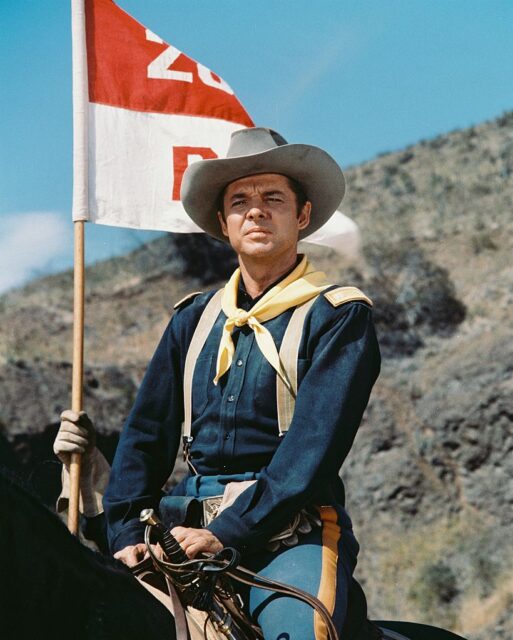
While known back in the day as “battle fatigue,” Audie Murphy suffered from what today we’d call post-traumatic stress disorder (PTSD) as a result of his WWII service. After he returned home, he began to suffer from insomnia and depression, and needed to find a solution. He was prescribed Placidyl, a strong sedative, from a doctor and unknowingly became addicted to it. When he realized the grip the drug had on him, Murphy locked himself in a motel room, without any pills, and spent a week detoxing.
Unlike many celebrities and veterans of his time, Murphy became an advocate for mental health, particularly in regards to retired servicemen returning home from Korea and Vietnam. He spoke of his own experiences in his advocacy, and even pushed the US government to conduct better research into the toll combat has on the human brain.
He wanted to make a movie about Desmond Doss’ military service
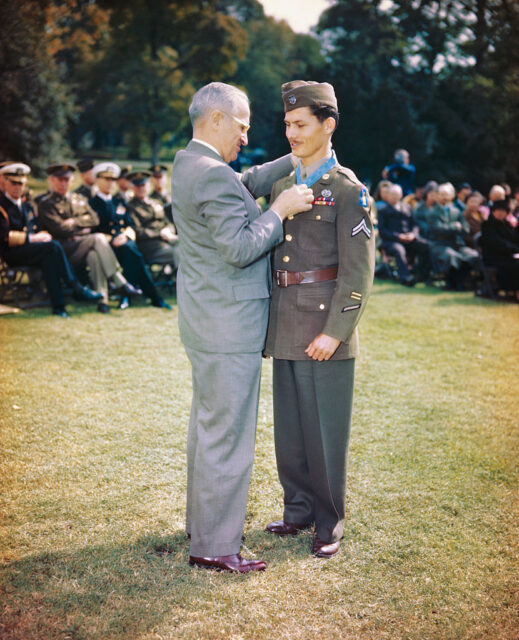
There was once a time Audie Murphy wanted to make a film about another Medal of Honor recipient, Desmond Doss. Awarded the decoration for his actions at Hacksaw Ridge during the Battle of Okinawa, Doss risked his life to treat his injured comrades, even though it meant exposing himself to unrelenting enemy fire. His efforts saved the lives of 75 men.
Hal B. Wallis, the producer of Casablanca (1942), tried to use Murphy to convince Doss to sell his story to Hollywood. However, the MoH recipient didn’t consider himself a hero, nor did he want “his character being impugned or compromised,” so he turned down the offer. It wasn’t until the release of Hacksaw Ridge in 2016 that Doss’ bravery made it to the big screen.
Audie Murphy portrayed himself in To Hell and Back (1955)
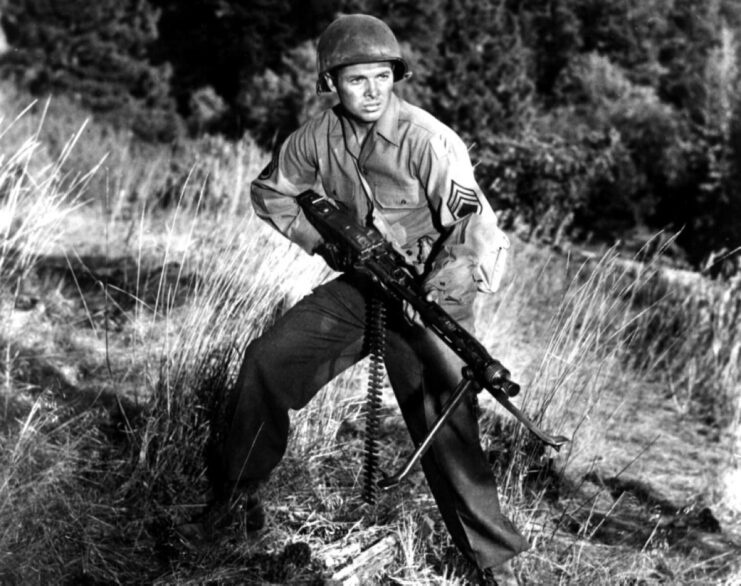
It’s rare that someone gets a film made about their life, let alone that they get to star as themselves in it. Audie Murphy is one of the few who did, portraying himself in the 1955 movie, To Hell and Back, based on the 1949 autobiography ghostwritten by his friend, David McClure.
To Hell and Back covers Murphy’s service during the Second World War, and stars the likes of Jack Kelly, Marshall Thompson, Charles Drake, Gregg Palmer and Paul Picerni, among a host of other notable names. It was released on the anniversary of his discharge from the US Army, and received generally positive reviews.
Despite being poor, there were still products he wouldn’t promote
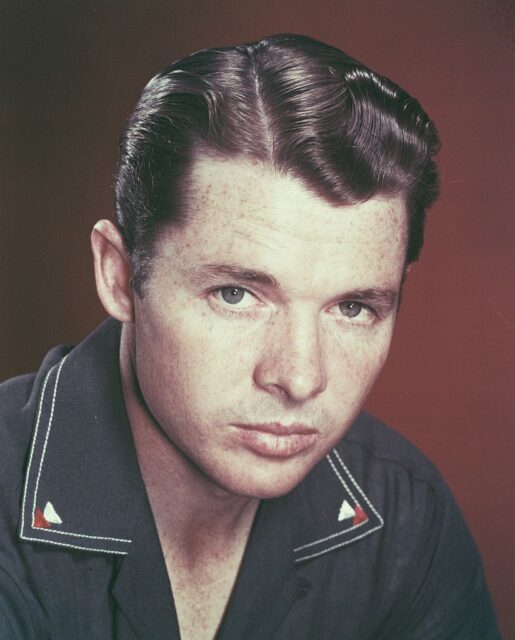
During the twilight years of his life, Audie Murphy faced financial challenges. He suffered substantial losses, amounting to several hundred thousand dollars, in an Algerian oil venture, and the Internal Revenue Service (IRS) pursued him for outstanding tax debts.
While many actors would have readily embraced any job opportunity that came their way, Murphy remained steadfast in upholding his principles. Despite being presented with numerous offers for cigarette and alcohol advertisements, he declined each one, as he was resolute in his commitment to setting a positive example for his youthful admirers.
Audie Murphy is buried at Arlington National Cemetery
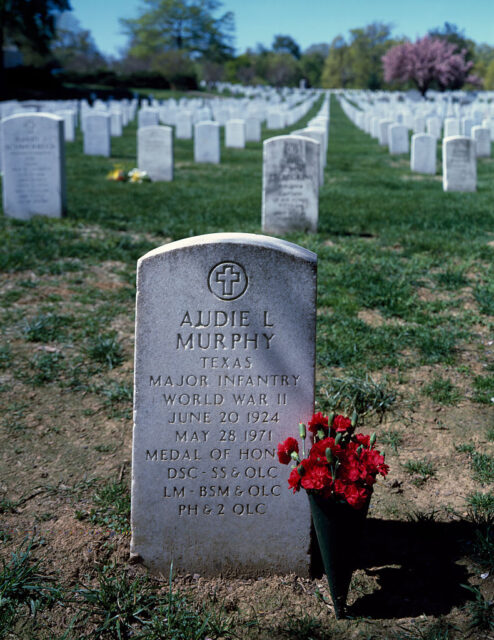
While traveling to a business deal on May 28, 1971, Audie Murphy was killed when the private plane he was in crashed into the side of a mountain in Roanoke, Virginia. Given his prior military service, he was granted a plot in Arlington National Cemetery, where he was buried with full military honors on June 7.
More from us: Henry Fonda Served In the US Navy During WWII – He Didn’t Want to ‘Be a Fake In a War Studio’
Given his status, Murphy’s gravestone became a high-traffic area, becoming the second-most visited at Arlington, after that of President John F. Kennedy. The amount of visitors prompted the constructed of a flagstone walkway, and those wishing to visit the grave can find it in Section 46, across from the Memorial Amphitheater.
